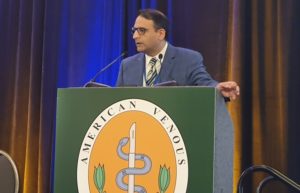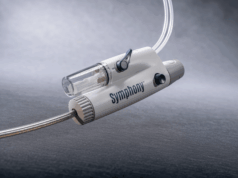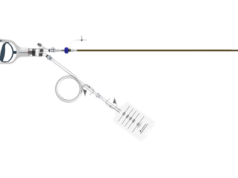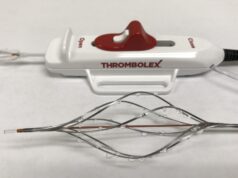
Thrombolex has announced that results of its First-In-Human (FIH) trial confirm the early safety and feasibility of using the Bashir Endovascular Catheter for pharmacomechanical catheter-directed thrombolysis (CDT), in patients with acute pulmonary embolism (PE).
The data, presented at the annual meeting of the American Venous Forum (VENOUS 2020; 3–6 March, Amelia Island, USA) by Riyaz Bashir (Temple University, Philadelphia, USA), showed a significant reduction in RV/LV and clot burden.
“The results from the First-in-Human study for the Bashir Endovascular Catheter are exciting. PE patients treated were real-world patients that had high thrombus burden and major right ventricular dilation, and the amount of thrombus removed with less than 14mg of tissue plasminogen activator (r-tPA) was impressive. I look forward to seeing what this device can do in a larger study and a randomised cohort,” said Akhilesh Sista (NYU Langone Health, New York, USA), co-principal investigator of the Thrombolex FIH study.
The Thrombolex FIH trial was a prospective, single-arm, multicentre study conducted under an Investigational New Drug (IND) assignment from the US Food and Drug Administration (FDA), and evaluated the safety and feasibility of the Bashir Endovascular Catheter in the treatment of patients with acute pulmonary embolism. The study enrolled nine participants across four US study centres.
According to a statement, the Thrombolex FIH study demonstrated excellent safety, as there were no drug- or device-related adverse events, as adjudicated by the Data Safety Monitor. The primary feasibility endpoints were also met, with a significant mean reduction in RV/LV, which decreased from 1.52±0.26 pre-procedure to 0.97±0.06 (p=0.0009), corresponding to a 36.7% reduction at 48 hours after intervention.
Likewise, the Modified Miller Index (MMI) demonstrated a decrease from 25.4±5.3 pre-procedure to 16.0±4.0 at 48 hours (p=0.0005), corresponding to a 37.1% reduction in clot burden, after a mean dose of 13.6 mg of r-tPA over 8 hours.
Regarding these results, Bashir confirmed in his presentation that while both the safety and feasibility endpoints were met, “thrombus burden reduction is the seminal and most important finding”.
“The innovative design of the Bashir Endovascular Catheter enables it to engage and fissure the thrombus, as well as deliver fibrinolytic throughout the entire cross-sectional volume of the clot,” said Kenneth Rosenfield (Massachusetts General Hospital, Boston, USA), fellow co-principal investigator.
“In theory, this potentially allows for more prompt restoration of flow to the lungs and relief of right ventricular overload. The results of this EFS study appear to corroborate this mechanism of action. We look forward to further evidence of this effect in a larger cohort.”
Speaking to Venous News at AVF 2020, another of the co-principal investigators Anthony Comerota also discussed the results of the trial: “I think there were two remarkable findings: one was safety, as there were no major adverse events, and the second was the enormous reduction of thrombus burden in a relatively short period of time, and at a low dose of tPA.
“This study also underscores the importance of ensuring that tPA is well-diffused into the thrombus, because if you can properly deliver the tPA, it will dissolve clot. The challenge is how best to deliver it, and I think this catheter sets the stage for maximal delivery into the thrombus.”
Looking ahead, Comerota also underlined next steps for the Bashir Endovascular Catheter: “In the RESCUE pivotal study, we are targeting 125 patients, and I think that this investigation will answer a lot of our questions. We have a good sense of where RESCUE will go, and are anticipating very effective removal of thrombus, particularly because there were such remarkable outcomes for acute submassive patients in the FIH study.”
Both the reduction in RV/LV and clot burden, as measured by the MMI score, compare favourably with what has been published in ultrasound-assisted catheter-directed thrombolysis and mechanical thrombectomy device trials.
“We are excited about the excellent results of our FIH trial, which has demonstrated prompt restoration of blood flow with rapid clot dissolution and reduced RV strain. We look forward to collaborating with physicians who work in this field to bring better treatment options to patients,” commented Marv Woodall, chairman & CEO of Thrombolex.









